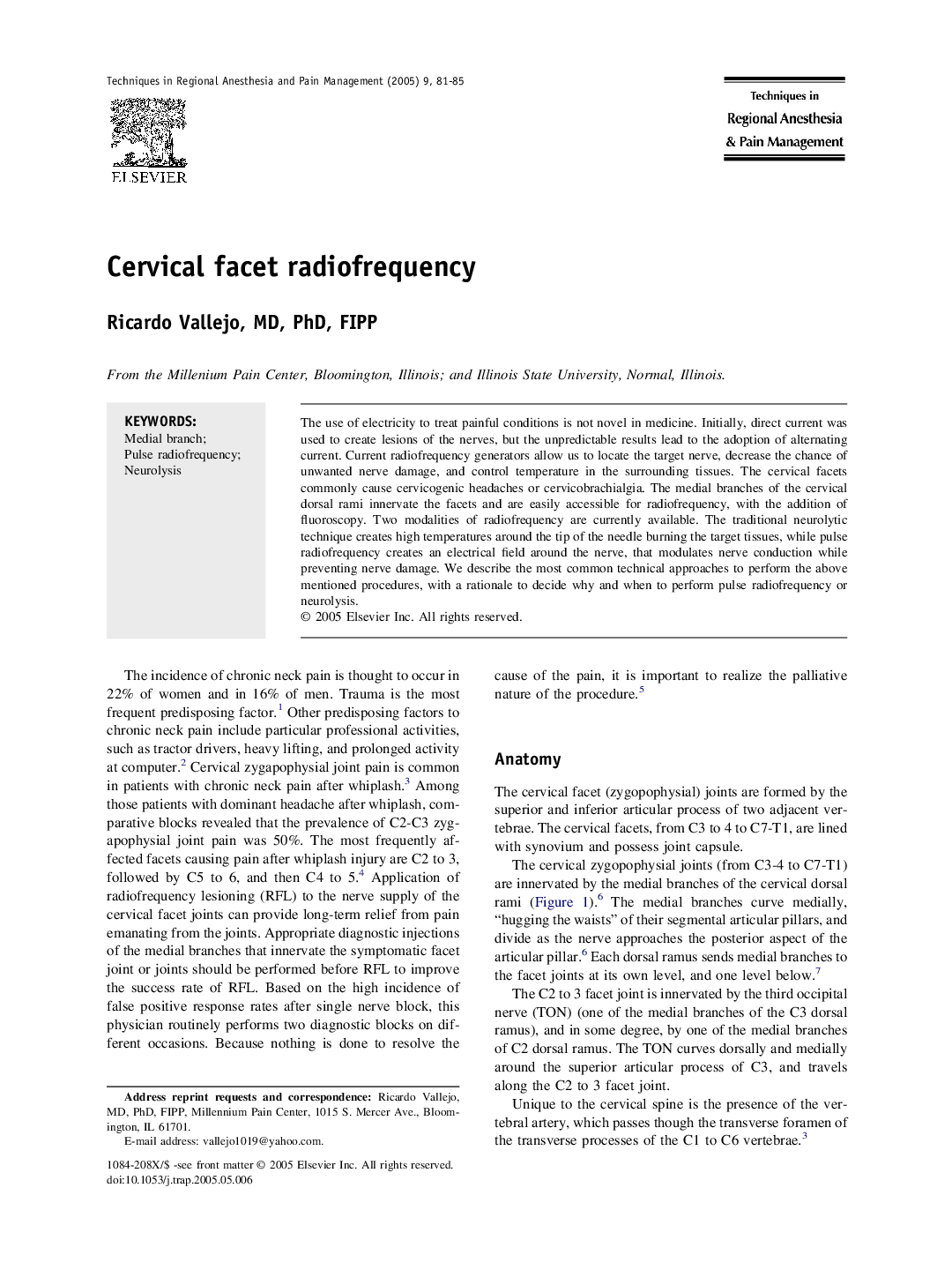| Article ID | Journal | Published Year | Pages | File Type |
|---|---|---|---|---|
| 9101986 | Techniques in Regional Anesthesia and Pain Management | 2005 | 5 Pages |
Abstract
The use of electricity to treat painful conditions is not novel in medicine. Initially, direct current was used to create lesions of the nerves, but the unpredictable results lead to the adoption of alternating current. Current radiofrequency generators allow us to locate the target nerve, decrease the chance of unwanted nerve damage, and control temperature in the surrounding tissues. The cervical facets commonly cause cervicogenic headaches or cervicobrachialgia. The medial branches of the cervical dorsal rami innervate the facets and are easily accessible for radiofrequency, with the addition of fluoroscopy. Two modalities of radiofrequency are currently available. The traditional neurolytic technique creates high temperatures around the tip of the needle burning the target tissues, while pulse radiofrequency creates an electrical field around the nerve, that modulates nerve conduction while preventing nerve damage. We describe the most common technical approaches to perform the above mentioned procedures, with a rationale to decide why and when to perform pulse radiofrequency or neurolysis.
Keywords
Related Topics
Health Sciences
Medicine and Dentistry
Anesthesiology and Pain Medicine
Authors
Ricardo (FIPP),
